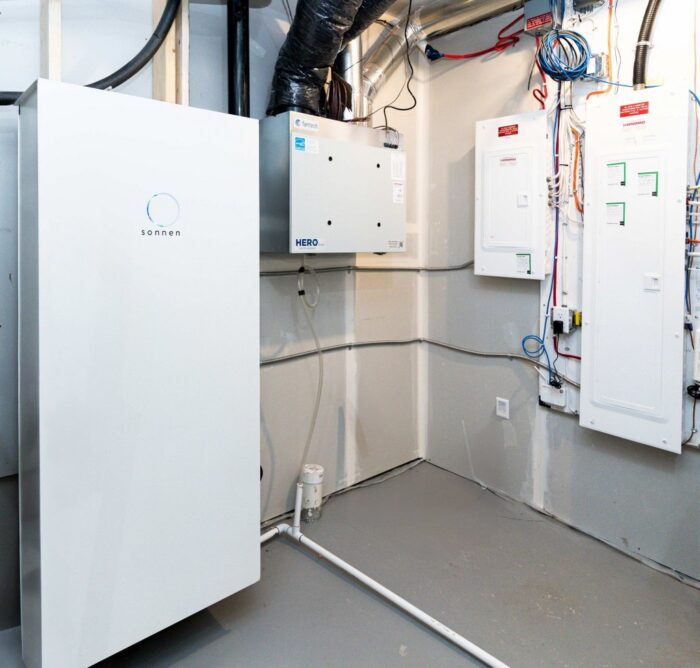Inside Canada’s first true VPP market: Alberta’s energy arbitrage experiment
As other provinces test pilot programs, Alberta’s deregulated grid and battery-backed homes are building real-world value from virtual power plants

The Alberta market for solar + storage energy arbitrage is helping to drive the formation of virtual power plants (VPPs) in the deregulated province more so than elsewhere in Canada, players tell Solar Builder Canada.
“Other Canadian provinces have modernized their regulations somewhat, but currently Alberta is the only province where a truly virtual power plant could operate,” observes Kelly Tallas, the CEO of Solartility, an energy arbitrage aggregator active in Alberta.
In Alberta, transmission and distribution utilities and the electricity generation utilities are helping usher in this new era.
“What’s interesting about Alberta — especially with EPCOR [formerly Edmonton Power Corp.] and with Enmax [Enmax Power Corp.] — is that there is a level of alignment between the distribution utilities and retail electric providers that I’ve never seen elsewhere,” observes Geoff Ferrell, senior vice president, Global C&I and VPP Project Business, sonnen USA. EPCOR is an energy generation utility and Enmax Corp. (ENMAX) is a vertically integrated utility with operations across Alberta, Canada, and in Maine.
Alberta VPP in action
That alignment between utilities and technology providers is now taking shape in the field. One demonstration VPP under construction is sonnen’s 100-home Blatchford Lands community project, said to be Canada’s first home battery-based VPP in a master-planned community, built by Landmark Homes. The city of Blatchford was developed as a carbon-neutral community.
The significance of selecting a master-planned community for the project is that the solar + storage systems are installed at the time of building the home and are financed as part of a traditional 30-year mortgage, at interest rates lower than PACE-style loans or commercial loans.
The 500-acre Blatchford project, totaling 500 kW of solar and 2 MWh of battery storage, is based on 5 kW to 10 kW rooftop solar installations plus a 20 kWh battery cabinet. The project was launched in June and should be complete in 16 months, Ferrell told SB. Supporters of the project include Landmark Homes, the City of Edmonton, transmission and distribution utility EPCOR, Emissions Reduction Alberta, energy aggregator Solartility, sonnen, and the University of Alberta.
Blatchford, set on the site of the now-retired municipal airport in Edmonton, was developed through public-private partnerships with a vow to make the community a net-zero neighborhood. The project was supported by the Emissions Reduction Alberta (ERA) program, which committed $3.3 million to the VPP with funds sourced from the Government of Alberta’s Technology Innovation and Emissions Reduction fund.
“In Blatchford, they’re asking builders to commit to Net Zero homes, and in doing that, it created the perfect platform for us,” Ferrell suggests. While sonnen monitors each of the homes in the VPP separately, it also has a cluster view of the entire community, which it shares with Solartility for energy arbitrage purposes. Although the Alberta wholesale market is based on hourly intervals, sonnen pulls data every second, he notes.
“The VPP is receiving direct signals from EPCOR, whether that’s voltage-related, frequency-related, congestion-related, or market-signal-related,” Ferrell says.
With this demonstration VPP in place, sonnen is considering the formation of VPPs of as many as 3,000 battery installs in Alberta and other provinces that could total 18 MW of energy and 60 MWh of grid support over the next 18 to 20 months, Ferrell says. “We are in talks to expand into the ENMAX territories in Calgary next,” he adds.
Solartility is also expanding its VPP network. “We’re just now rolling out a network of 10 homes with managed EVs in the Edmonton area, which will be capable of both battery-to-grid and vehicle-to-grid,” Tallas mentions. The company’s arbitrage software was developed in-house.
Sharing benefits of VPPs
Among the reasons the Blatchford VPP is attractive to home buyers is that, apart from zeroing out the typical electric utility bill each month, a bonus of around $300 is offered for participation. The sale of excess energy on the wholesale market is expected to return much more to homeowners, Tallas suggests.
“Electricity prices range from C$30 per megawatt hour to $1,000, and we’re able to capture arbitrage opportunity in real time through the VPP,” Tallas notes. “So homeowners can subtract another C$30 to $50 a month from what their bill normally would have been, just off of price arbitrage,” he calculates.
One reason the benefits of the Blatchford VPP can be shared more equitably than some VPPs in the United States is the degree of deregulation of the electricity market, several experts say.
More provinces adopt VPPs
According to Cognitive Market Research, the global VPP market size was about $2 billion in 2024 and is expected to expand at a compound annual growth rate (CAGR) of 22.6% from 2024 to 2031. The Canada VPP market is expected to increase from a value of $53 million in 2025 to $882 million by 2030, increasing at a growth rate of nearly 27%, Cognitive calculates.
Outside Alberta, Canada as a whole is opening its eyes to power of VPPs. “Canada has developed into a rich and innovative VPP market thanks to the pioneering efforts and support from great partners,” Ferrell says.
Others agree. “I think we’re going to see some rapid VPP growth and adoption over the next couple of years, especially with all the pressure on the market operators and the distributors to increase reliability, and as demand goes up,” Tallas tells SB. “2026 should be an important year for VPPs in Canada.”
Among early VPPs in Canada is the smart thermostat-based Save on Energy Peak Perks program in Ontario that now includes more than 100,000 homes. This program was developed by Ontario’s Independent Electricity System Operator (IESO) and by EnergyHub, self-described as a grid-edge flexibility provider.
The Ontario VPP was formed in about six months in 2024 and is capable of delivering peak demand reduction of up to 90 MW, according to EnergyHub, an independent subsidiary of Alarm.com, “a platform for the intelligently connected property,” the company states.
In Nova Scotia, the Efficiency Nova Scotia Eco Shift Pilot is being rolled out to participants with an offer of $500 upfront, plus an average performance incentive of $300 per kW delivered per season. The VPP is sponsored by Efficiency Nova Scotia, an energy “efficiency organization,” according to the group.
The Eco Shift VPP is based on a 15 kWh Enphase IQ Battery system. Participants can receive up to $1,500 per year in performance incentives if the batteries deliver up to 80% of their energy capacity during each demand response event, Enphase notes.
Further west, BC Hydro is installing 200 residential batteries in two communities to provide backup power and grid services.
The next VPP to market could be any province. “It would not surprise me if you saw some things [VPPs] coming out of British Columbia or out of the Ontario area in the short run,” Ferrell says.
VPPs inspire VPPAs
The spread of VPPs in Canada is helping create conditions for more virtual power purchase agreements (VPPAs), which corporate energy consumers pursue for their green goals. A VPPA is defined as “a financial contract for renewable energy where a company agrees to buy the Renewable Energy Certificates or Credits and pay the difference between a fixed price and the market price of electricity from a renewable project, but without taking physical delivery of the power,” Google AI says.
One attractive aspect of VPPAs is that the energy production on which it is based may come from a different province or state than the nominal consuming bricks-and-mortar corporate site. Indeed, there are cases of cross-border VPPAs including energy produced in Canada and users based in the United States.
Legislation on a provincial level will be a major driver of VPPAs in Canada. In Ontario, the legislature in June adopted O. Reg. 101/25, which “makes VPPAs a more viable option for businesses to meet ESG [Environmental, Social, and Governance] targets and contribute to Canada’s net-zero goals,” according to one Ontario office.





Comments are closed here.